In 2030, expected global population growth is estimated at 8.6 billon people (UN, 2017). In turn, global demand for food will increase with an estimated growth in egg production of 50% between 2015-2035. (FAO; OECD; Rabobank; FAPRI © Statista 2018).
In this sense, genetic selection during the last years has provided hens with a higher production capacity.
Gut health is a key factor in achieving maximum productive potential, not only because it’s a key factor for digestion and the absorption of nutrients but also because it’s an essential component of the bird’s immune system.
Concerns are also growing among consumers on the use of antibiotics in relation to microbial resistance.
This, along with pressure from a demand in increased welfare and food standards in particular from the increase of cage free production would lead us to a strong emphasis and focus on the challenges of maintaining a healthy gut.
Several factors must be considered about Gut health (Figure 1):

Both vectors create a connection between the external and internal environment of the hen, increasing the possibility of a negative effect on the intestinal balance. Some common influences:
- Anti-nutritional factors (non starch polysaccharides and anti-trypsic factors)
- Water, raw material and feed contaminants (E. Coli, Salmonella, mycotoxins, etc.)
- Sudden changes in formulation
- High density diets – excess of nutrients
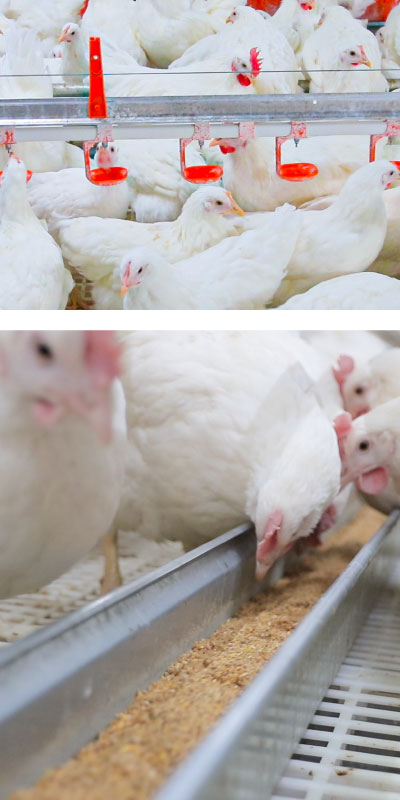
How different organs and the endocrine system respond against challenges.
Gut microbiotaRepresented by the balance between pathogenic and commensal flora. Latter being the one involved in the development of intestinal morphology and structure, immune modulation and supporting digestion and absorption processes.
Gut integrity is affected by increasing deoxynivalenol (DON) concentration in feed.
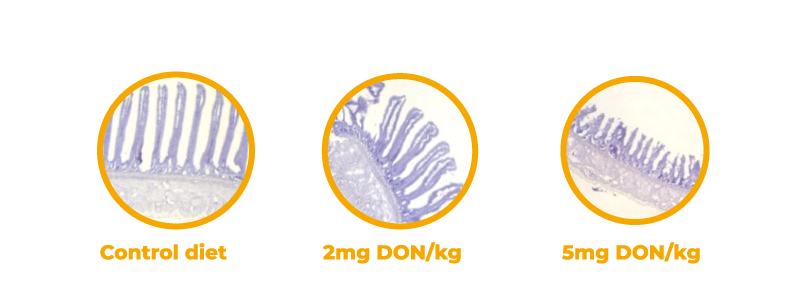
Also, factors like temperature (Figure 3), light intensity, poor ventilation, transport, vaccination, high stocking density, gut pathogens and the presence of virus may trigger a gut imbalance leading to inflammation processes becoming prevalent.
All these factors represent the basis for the establishment of optimal gut health.

The best practice to maintain an optimal gut health and therefore the hen’s productivity is PREVENTION. Some aspects to be considered are:
- Proper management, hygiene and biosecurity
- Optimal feed quality, format and presentation
- Water quality. Monitoring water to feed ratio would act as an indicator.
- Establishing adequate vaccination programs
- Reduction in crude protein levels may help to reduce undigestible protein fermentations. Inclusion of synthetic amino acids and proteases will help to control these undesirable fermentations.
- Feed additives
The recent focus on reducing or restricting the use of antibiotics has been accompanied by a rise in intestinal problems often leading to a loss of productivity that has led to the development of several feed additives with the potential to exert beneficial effects on intestinal microbiota, impede pathogens adhesion to epithelial cells and to improve the immune response.
The market is now awash with probiotics, prebiotics, organic acids and blends of them (either protected or not), phytobiotics and existing feed enzymes. Always remember that the efficacy of feed additives relies on additional factors such as age of the hen, management, production system, genetics, etc.
Feed particle size and format are extremely important for gut development. Providing mash feed with optimal feed distribution particles, improves:
- Feed consumption
- Nutrient digestibility
- Promotes digestive organ development
- Improved gut health for optimizing performance
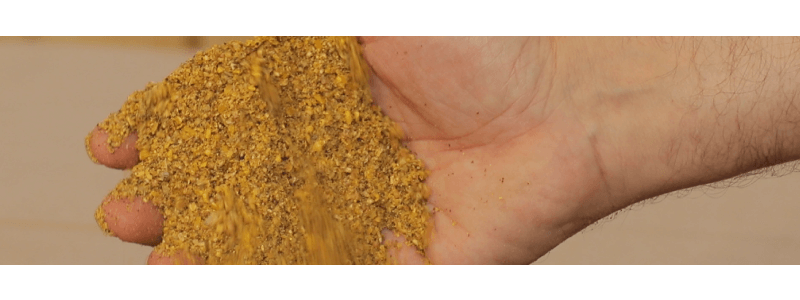
When feed contains too many fine particles, it negatively affects gizzard and proventriculus development, these organs are important due to their essential role in nutrient utilization and gut health maintenance. (Zaefarian et al., 2016)
Gizzard development is key. A well-developed gizzard, besides reducing feed particle size entering the duodenum, acts as a barrier for microbiota due to pH reduction.

Probiotics are viable microorganisms able to promote a beneficial effect on birds’ gut heath. Mechanisms of actuation include:
- Improvement on intestinal microbiota balance
- Source of energy through short fatty acids (SCFA’s)
- Reducing the capacity of pathogens to adhere to the intestinal epithelium by competitive exclusion
- Improving enterocyte’s tight junctions
- Modulating the immune response
- Inhibiting tumour necrosis factor at epithelial cells

Prebiotics are characterized by their capacity to modify (in a beneficial way) the composition of intestinal microbiota exerting a positive effect on gut health.
They’re different oligosaccharides whose main feature is that they are undigestible by endogenous enzymes. For that reason, they reach the distal part of intestinal tract where they can be used as a substrate by beneficial bacteria like bifidobacterial or acidolactic bacteria (Ricke, 2018).
Normally, oligosaccharides include carbohydrates like fructooligosaccharides (FOS), galactooligosaccharides (GOS) and mannooligosaccharides (MOS).

Here it’s worth mentioning dietary fibre, the sum of NSP’s (non starch polysaccharides) and lignin. Some of these polysaccharides represent a substrate for intestinal microbiota besides a source of energy. Increasing the inclusion rate of crude fibre would improve intestinal microbiota diversity and tract physiology.
During the rearing period, the first 5 weeks of age are key due to the development of the digestive and immune system as well as being the period when intestinal microbiota establishment takes place. The inclusion of moderate levels of insoluble fibre in pullet and layer diets stimulates development and physiology of the intestinal tract therefore improving bird’s productivity.
Is defined as the combination of prebiotics and probiotics where the latter selectively enhances probiotic growth thereby showing a synergic effect.
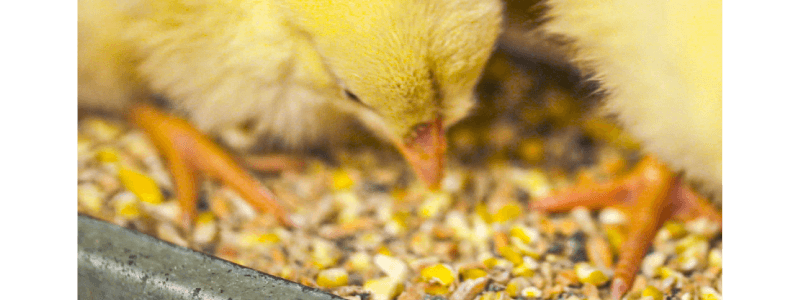

Organic acids are additives that, besides being effective reducing or controlling microbiological contamination of the feed (Theron & Rykers Lues, 2011), have been proven to exert beneficial effects on gut health and performance.
Their inclusion in hens and pullets’ diets stimulate endogenous enzyme activity, improves mineral solubility and can have an antibacterial effect therefore supporting gut intestinal integrity.
There are a variety of organic acids available. Some examples are acetic acid, formic acid, lactic acid, fumaric acid, etc. or combination of them. They differ on physic-chemical characteristics and can be included in feed or drinking water.


Their effectiveness depends on the kind of acid (pka and molecular weight), concentration, dosage and pH of the environment.
At lower levels of pH, a higher concentration of non-dissociated form can be expected. This allows them to penetrate inside the bacteria reducing their proliferation and sometimes even killing them directly.
Therefore, their effectiveness will be higher at the foregut (crop, proventriculus and gizzard) where pH values are lower.
When the desired effect is to reach the distal part of the intestinal tract, we find that organic acids or blends that have been coated work more effectively. Coating them prevents the realise of the acid before duodenum (Figure 8) avoiding the proliferation of pathogenic microorganisms.
Butyric acid/butyrate is one example. Besides being an energy source for colonocytes, it is also a cellular mediator that helps to regulate multiple functions like intestinal tissue development, oxidative stress reduction and immune system modulation.



Phytobiotics represent natural plant derived compounds associated with antimicrobial, antifungal, antiparasitic, anti-inflammatory, antioxidant and immunomodulatory properties.
Essential oils are within this group.
Antioxidant properties of essential oils will influence the immune response however there can be a high variability of results from different essential oils.

For many years the inclusion of exogenous enzymes in hen’s diets has been standard practice. Xylanases, β-glucanases, mannanases, lipases, proteases, phytases to name a few, or indeed, combinations of exogenous enzymes are often supplemented dependent on raw material availability and quality in order to reduce the impact of antinutritional factors, such as NSP’s, phytic acid or proteases inhibitors. As they may affect the process of digestion and the absorption of nutrients with the potential of compromising gut health.
The inclusion of Carbohydrase’s can have a positive impact on intestinal microflora due to its different mechanism, ultimately reducing the antinutritional effect of NSP’s by producing different oligosaccharides with a potential prebiotic effect.
Similarly, the inclusion of proteases reduces the undigestible protein concentration in the intestine that would otherwise trigger fermentations that may affect the microbiota composition.

In addition, it has also been suggested that they have the capacity to degrade antigenic proteins present in soybean meal and/or degrade antinutritional factors like trypsin inhibitors and lectins (Cowieson et al., 2016).
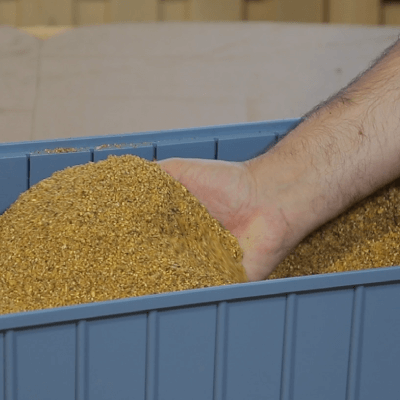
The avian intestinal tract is a series of organs that performs two important functions: digestion and supporting the immune system. The microbiota present at the digestive tract is key to maintaining gut health and, therefore, productivity.
Factors like management, diet, etc. influence the presence and proliferation of pathogens that pose a risk factor that may trigger infections. Any action should be addressed that will help maintain the balance between commensal and pathogenic flora.
Within strategies, prevention will be our best ally. From a nutritional standpoint there are a variety of additives that have proven, through different mechanisms, their potential to support intestinal ecosystem maintenance and immune function.
Subscribe to our Newsletter
And find out about all the latest industry news.







 Nutrition
Nutrition